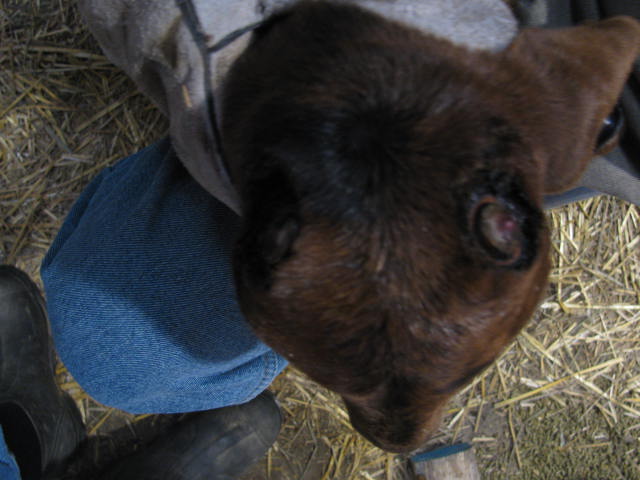Hot Issue: How to Burn Horns on Goats - 1/16/2013
by Carole Pontious on 10/31/13
Perhaps the most frequently asked question we have at White Oak Farm is how to burn horns on wethers. While many Southern states have done away with this practice, it is still a common requirement in the Midwest. Unfortunately, many herd operations have not yet learned this skill causing concern on the part of the youth when horn regrowth exceeds the show’s guidelines. Then too, regrowth requires more evasive procedures and undue stress to the goat. Therefore, we would like to share our practices that we have found effective. Consult your veterinarian to see if these practices can help you, too.
We perform this task, when goats are two weeks of age. We wait until this time for two main reasons. One, the goats are old enough to tolerate the procedure. Two, it is the scheduled time to give the goats their CD & T vaccination. Since the CD & T offers tetanus protection, we feel this should be given at the same time that we burn horns.
We use a heavy duty dehorner to do the job. We allow it to heat up sufficiently for the task and allow for it to reheat between each dehorning. We first administer two (2) cc of the CD & T vaccination sub-q to the goat. A handler is helpful to restrain the goat. Make sure both you and your handler are wearing fire resistant gloves. We use welding gloves to protect our hands.
The dehorner is placed around the horn of the goat for ten seconds with steady even pressure. Make sure the dehorner covers the entire area around the horn. You will note a copper ring around the horn after the dehorner is removed. The key to this task is to remove the shell of the bud after you burn the horn. Caution: The horn is hot, so wear gloves to remove the bud. If you do not take the bud off, it will reattach and cause regrowth.
Allow the dehorner to warm up again before you do the same process to the second horn. After both horns have been removed, return to the first horn and apply the dehorner for eight (8) seconds to cauterize the area. With time, the hair will grow over the site and the animal will appear polled.

Equipment requirements include: dehorner, welding gloves, and CD & T vaccine.

A dehorner has been used on the left horn. Note the copper ring. The bud has not yet been removed.

The goat is successfully dehorned and the area is cauterized.
